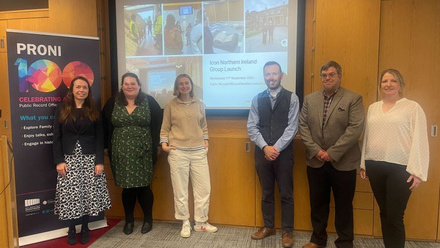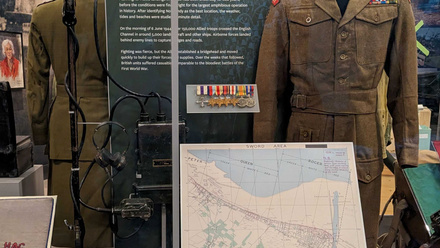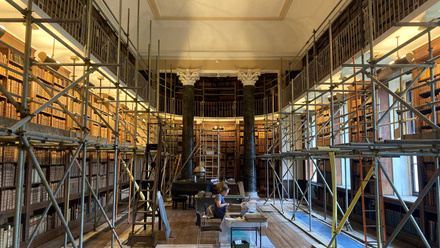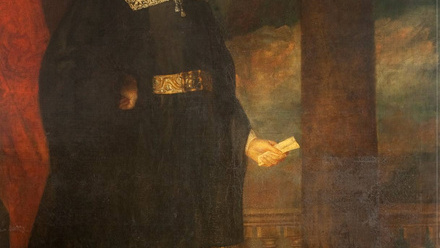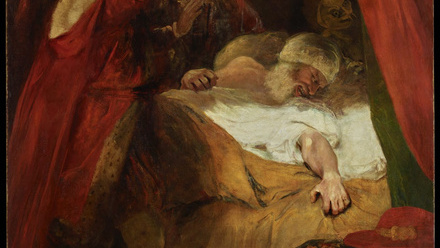Using near infrared spectroscopy to assess Tudor Tapestries
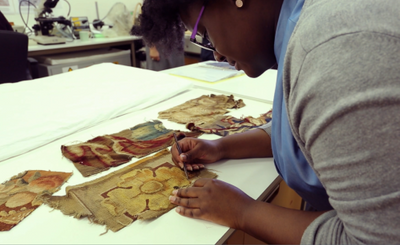
Nanette Kissi writes:
Light, humidity and temperature changes (as well as many other factors) may cause damage to fragile historic tapestries on display over time. In previous research, to measure the physical and chemical changes occur yarns samples had to be removed from the back of the tapestry. However as fragile objects that are over 500 years old it is not always practical to take down the tapestries whenever there is a need for scientific investigation. Another way that conservators measure the condition is by carefully examining the yarn fibres in the tapestries on display to identify broken, brittle or frayed yarns. Through visual assessments alone however, it is difficult to understand the chemical and physical changes that take place.
In this research, we used a non-invasive portable technique called near infrared spectroscopy (NIR) which provides information about the chemical structure of real tapestries from the surface. Using NIR we measured the chemical properties of the wool fibres which are a major element in Tudor tapestries. Although NIR allows us to analyse the tapestry without moving it, the information produced from NIR is often difficult to interpret. It is often necessary to calibrate this method using data measured with destructive analytical techniques like Fourier transform infrared spectroscopy (FTIR) which was used to measure chemical breakdown products (and specifically cystine oxidation products) caused by various factors including UV light induced degradation. The various by-products produced can be indicators of fibres becoming more brittle and ultimately fibre loss. The sacrificial yarn samples required for destructive FTIR analysis in this research, were made available through a collection of historic tapestry fragments at Historic Royal Palaces. Using NIR, it was possible to create mathematical models and apply them successfully to a separate set historic tapestry fragments and with limited success to historic tapestries on open display at Hampton Court Palace predicting their unknown chemical breakdown properties.
In developing this non-invasive tool, we can gain a better understanding of condition and may potentially identify areas that are susceptible to damage before it is results in physical fibre loss. With further development, this research will help to provide evidence-based decision making for the conservation of historic tapestries, complementing the existing and essential condition audits carried out by conservators during visual assessments.


